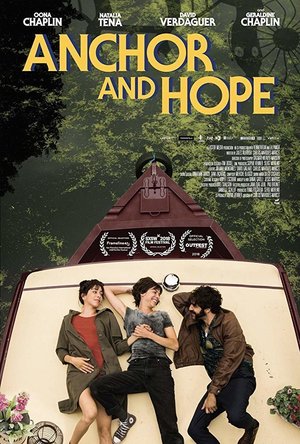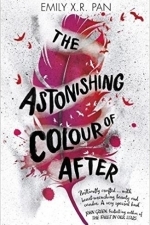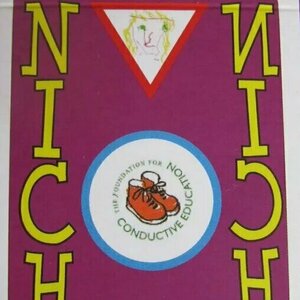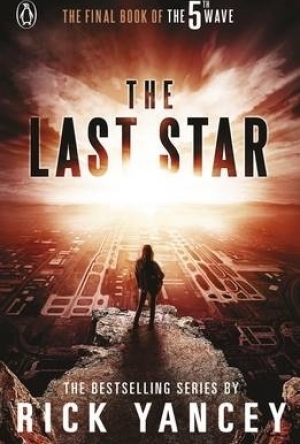
The Last Star
Book
The Last Star is the heart-stopping finale to the bestselling 5th Wave series by award-winning...
ClareR (6037 KP) rated The Ophelia Girls in Books
Jan 18, 2022 (Updated Jan 18, 2022)
And then along comes Stuart: her mother’s childhood friend, and a friend of her fathers as well. Stuart makes Maeve feel seen. And this is where my internal klaxon went off. Stuart comes across as a predator. He notices Maeve’s infatuation and revels in it, finally taking advantage of her feelings. At least this is how I interpreted it.
Maeve is a girl who has led a sheltered life - a life mainly in hospital. She hasn’t had the opportunity to mix with other children, boys specifically, and has little life experience with the opposite sex. Regardless of that, Stuart’s character truly made me see red. I know, I know, it’s a book, but if I could have reached in, pulled him out and disposed of him (not thought that through properly, obviously), I would have. I will say that the sex scenes between Maeve and Stuart aren’t written in a titillating way. It’s seen through Maeve’s eyes, and she truly believes that he loves her. All the same, if this doesn’t appeal to you, you might want to steer clear.
In contrast to her mother, Maeve does follow her heart, and the reader is left to decide whether she was actually any better off.
Do I recommend it? Yes, of course. It’s written with gorgeous, lyrical prose, and really makes you empathise with the characters. I’m glad I read it.
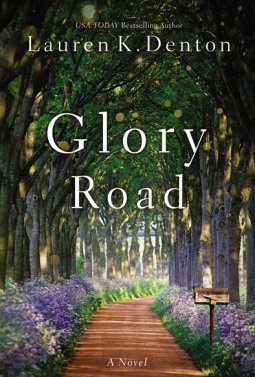
Glory Road
Book
Written in Lauren Denton’s signature Southern style, Glory Road tells the story of three...
Fiction Romance Women's Fiction
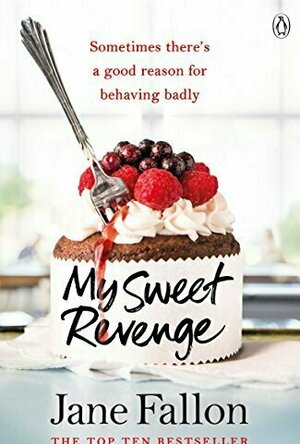
My Sweet Revenge
Book
The bestselling author of Getting Rid of Matthew and Strictly Between Us tells a bitter-sweet tale...

The Fairy Tale Tarot
Entertainment and Lifestyle
App
Welcome to the world of imagination and magic in The Fairy Tale Tarot! Brought to life by award...
Lucy Buglass (45 KP) rated Anchor & Hope (2018) in Movies
Jun 20, 2019
Throughout the course of the film, we focus heavily on the lives of Eva, Kat and Roger. The quality of acting was very good and believable, meaning it was easy for me to stay invested in their lives as events transpired. They all have very different personality traits that inevitably clash, and it’s not long before jealousy starts to rear its ugly head and tensions rise. Kat and Roger are close and both fluent in Spanish, meaning they’re able to communicate and Eva hasn’t got a clue what they’re saying. She starts feeling left out, which may or may not have driven her to think about the insemination. It’s left up to the audience to figure that one out. It’s clear Eva wants the baby more than Kat does, which is already a huge red flag.
The baby becomes a central part of the narrative, and the character’s lives. Anchor and Hope presents us with different viewpoints, all centred around this new life. It’s incredibly emotional to watch as we witness how three very different characters respond to it. I respected the fact the film doesn’t position itself as for or against any argument, it simply presents them to the audience as valid responses to what’s happening. Had the film gotten too preachy one way or the other, I think I may have found that frustrating. This is a film that leaves a lot up to the audience, and one that can spark interesting discussions.
Despite my interest in the topic and praise for the acting, I didn’t particularly like any of the characters. They’re all frustrating in their own ways and sometimes it felt a little too far-fetched and melodramatic. This weakened the film for me as I didn’t find myself rooting for anyone, and just wished they’d never made that decision in the first place. There’s no warmth for any of the characters, which was a let down. I also felt the story could have been shorter and snappier, as it felt too drawn out in places.
However, it is a very interesting look into insemination and sperm donors, and the script is strong and considered. It would be easy to cause controversy if not dealt with respectfully, but I felt like appropriate research had been done and they remained impartial throughout. The visuals are clean, well shot, and I liked the use of small, intimate locations to tell the story. Eva and Kat live on a houseboat, so that sense of minimalism is present throughout.
I was mostly entertained and enjoyed watching it, so I would recommend this film if it’s a topic that interests you. Overall, it’s an emotionally charged and well-written LGBT+ film and we definitely need more of those.
https://lucygoestohollywood.com/2018/11/08/anchor-and-hope-a-heart-wrenching-portrait-of-parenthood-sexuality/

Black-Eyed Susans
Book
**THE TOP 5 SUNDAY TIMES BESTSELLER** 'My book of the year so far. Breathtakingly, heart-stoppingly...
Jessica - Where the Book Ends (15 KP) rated The Astonishing Color of After in Books
Jan 30, 2019
Let me start at the beginning… Leigh’s mother commits suicide. Her mom’s name is Dorothy and goes by Dory for short. While my mom didn’t commit suicide, she did die unexpectedly in August of 2016. I know, I know you’re thinking what does this have to do with the book but just put your patient pants on. My mom’s name was Doria, and she went by Dory. While Leigh was lucky enough to be the one that didn’t find her mom, I wasn’t lucky enough to have the same luxury. I could relate to how Leigh was feeling on so many levels. So much so, it felt like the author had interviewed me and then written the book based on that interview. Leigh feels like she is to blame partly for her mother’s death. She feels like if she would have only done x better, if only she’d been in y place at z time she would have been able to save her mom. I know because I had these same thoughts and still do until this day. After reading this book and realizing there just wasn’t anything I could have done to change the outcome of what was destined to happen. But just because my mom isn’t physically here anymore doesn’t mean she’s gone forever. I still see her in myself every time I look in the mirror. She is always with me.
The magical realism aspect of this book brought the journey and the imagery to life for me. I could picture this big beautiful red bird soaring around Leigh. The more I read of this book the more I found myself looking to the sky to see what is out there for me, and then I realized that looking to the sky is something that I’ve done since the day my mom died. I find myself looking around at the clouds and the sky seeing if there is a trace of her looking down on me. Now my favorite time to look to the sky is at night and I imagine her as one of the stars looming overhead keeping an eye on me.
The characters in this book are so real. Leigh, her grandparents, her dad, and Axel. Though, I must admit I feel as though the story could have been just as good without Axel. Sometimes he just seemed to crowd the story and take away from what was happening. I think my most favorite character was Feng, and all the she represents. I absolutely loved this aspect of the book. I also loved Ghost Month as this was something I had never heard of before and it and it reminds me of one of my other favorite holidays El Dia de los Muertos. I loved learning about the Taiwanese culture.
The way the author wove this story together through her words brought the magic and the storytelling to life. Her writing style worked extremely well for the subject of this story and I can’t wait to see what she is going to write in the future. The only aspect of this story that just didn’t mesh for me was all the colors sprinkled throughout the story. Honestly though, that is such a minute detail that it’s barely worth mentioning.
As you can see this story hit me very close to home, and I am so incredibly grateful to the author for writing it. It rebroke my heart and then helped to heal that same broken heart.
Now, on to the important bits… Suicide… If you are ever in a position where you feel that you just absolutely can’t go on do me one solid. Pause. Pick up your phone, and text HELP to 741741. This is the number for the Crisis Text Line. You will be connected to one of their trained Crisis Counselors. I am a trained Crisis Counselor on the CTL and I can guarantee you that you are not alone in how you’re feeling. Ask for help, we’re here to listen, we’re trained to help you. You are not alone. Just remember 741741 and HELP. That’s all it takes and someone will be there for you.
Purple Phoenix Games (2266 KP) rated Niche in Tabletop Games
Mar 3, 2021
Niche is a puzzly abstracty Sudoku-y card sheddy game for two to seven players that can be played in as few as 10 minutes. In it players attempt to shed their hand and score the most points by adding cards to established lines of cards. As with most of Andy Hopwood’s games, though, there is a twist.
DISCLAIMER: We were provided a copy of this game for the purposes of this review. This is a retail copy of the game, so what you see in these photos is exactly what would be received in your box. I do not intend to cover every single rule included in the rulebook, but will describe the overall game flow and major rule set so that our readers may get a sense of how the game plays. For more in depth rules, you may purchase a copy online or from your FLGS. -T
To setup the dealer will shuffle the deck and, well, deal out seven cards to each player. The cards not dealt form a deck and from this deck a starter card is flipped to the table. Setup is complete and the game may now begin!
On a turn each player will need to perform three steps: Select, Place, Score. When Selecting a card from their hand the player will need to observe the last played card. This card will essentially inform the player of what CANNOT be played. For example (per the photo above), if a yellow triangle was just played, then the next card played can be NEITHER yellow nor a triangle. So from their hand the active player will select a group of cards that can be played this turn and choose one to add adjacently to the most recently played card.
The player then must Place their card such that they do not add the same card to the line that already exists within the line. For an example here (per the photo below), the most recently played card is a blue circle. In hand are two blue squares, a yellow square, and a red square. As the previous card is blue the only choices left are the yellow and red square. However, the card played previous to the blue circle was a yellow square, so that leaves our player with only one choice: the red square connected to the blue circle. Now, the player could actually use the yellow square, but would need to place it below the blue circle forming the beginning of a new line. I will explain why that is a less strategic play.
When players perform the third step in a turn, Scoring, they will count up all cards in the lines extended by their card, both vertically and horizontally. In our previous example the red square continues a line of two cards so their score for that placement is three. Should they place the yellow square below they will only score two as they have added onto only one card. Fans of Azul will be familiar with this scoring system. Players are expected to keep track of their own scores each turn.
Should a player not have any legal plays using cards in their hand they must pass, and await their next turn. Play continues in this manner of players performing these three steps in a turn until a player sheds their entire hand of cards. All other players will have one more chance to play one card to score points. Players add up all the points they have scored throughout the game and the player with the most points is the winner!
Components. This is a deck of cards in a tuckbox. The cards are all fine quality, and the iconography could not be much clearer. I have zero qualms with the components here.
Gameplay is super quick and puzzly, with a great weight for its type of game. This will not be a centerpiece title of the game night, but will offer filler style gameplay for gamers mulling about or waiting for the next game to begin. I enjoy the simplicity of the rules coupled with the puzzly and thinky nature of each turn. Obviously the name of the game is scoring points, so you want to add to an already-long line instead of having to begin a new off-shoot somewhere, but it is near impossible to anticipate what other players will place on their turns. Therefore, more strategic players will find either solace or frustration from the more tactical style of play here.
I do want to mention that this game was originally designed for an event benefiting The Foundation for Conductive Education in the UK. Quote taken from the BGG profile for Niche: “The game aims to promote and support The Foundation for Conductive Education. This method works with children and adults who have conditions such as Cerebral Palsy, Stroke, M.S. or Parkinsons, helping them to lead more independent lives.” I know this organization holds a special place in the designer’s heart and I just wanted to take a moment to give a shout-out to this amazing organization and this amazing person who created a game for the benefit of others. I applaud both entities, and hope for much success.
That said, Niche is a game that can be played with any type of gamer in almost any situation. It takes up little table space (at most nine cards in a line) and is rules-light. Purple Phoenix Games gives this one an extended 8 / 12. If you are a fan of Sudoku and would like to explore a little card game that gives this reviewer the same vibe (but infinitely more fun) then I urge you to grab a copy of Niche. Not only will you be purchasing a good little game, but your purchase also goes toward furthering an organization that is doing very important work in the UK. And if you would like to feel very smart, play Niche with me sometime and watch me struggle to play the right card.
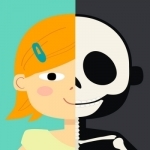
This is my Body - Anatomy for Kids
Education and Medical
App
Children explore and learn about the basic functions of the human body through hands-on gameplay –...

